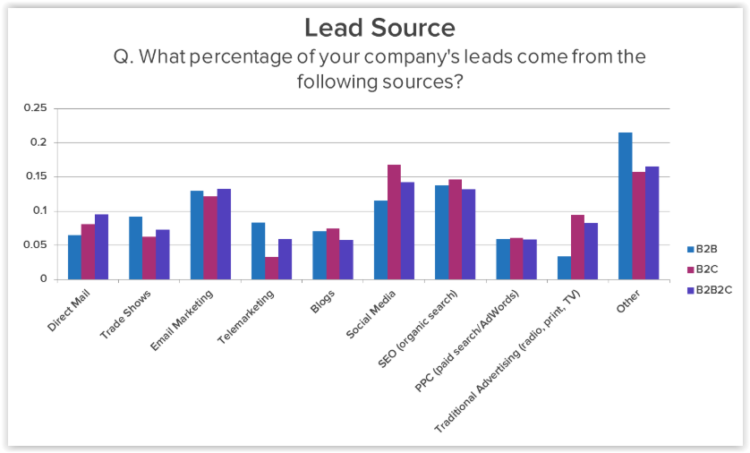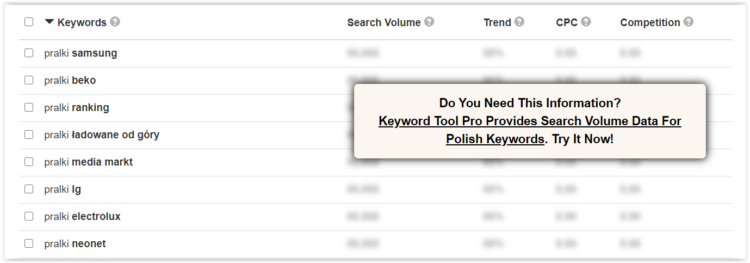
Only in a very few cases online marketing aims at improving website traffic as much as possible. However, most often, people decide to perform various SEO activities to generate new leads.
Leads – what are they?
The definition of leads can differ depending on the character of a given company. To put it simply, leads are generally consumers or businesses interested in offered services, so:
- In the case of a travel agency, a preliminary booking (when potential clients provide contact details) of a trip may be a lead.
- In the case of a service company, an inquiry submitted via the contact form may be a lead.
Lead management aims at converting the interest in the offer into specific purchasing decisions.
Although every industry is different, there are certain activities, including SEO, that is common ground and work well for each business type.
Generating more leads with the use of SEO
Allocating the budget in a way that enables maximizing the effects is the key to the effectiveness of the marketing activities of any enterprise. Every company has its own experience and background, therefore, business owners devote resources to activities that generate the greatest number of new leads. It’s worth mentioning that sources of leads in B2B (business-to-business) and B2C (business-to-consumer) vary totally. Take a look at the survey conducted by Hubspot.com.

As you can see, “other” constitute a sizable percentage of the lead sources. On the other hand, SEO, social media and email marketing bring the greatest benefits. However, these are just general numbers and you should try out various solutions to optimize budget management in your company. This way, you’ll be able to increase the expenditure on the most effective advertising methods and stop investing in solutions that aren’t particularly profitable.

SEO as the key to lead generation
Improving your visibility in Google is a great method of lead generation. All of this thanks to the fact that this way, visitors will enter your page after typing in the search bar a specific query they’re interested in. So, these won’t be random visits, users browsing your website will be looking exactly for the products or services similar to the ones on your offer. However, to attract such users, first, you need to work on your visibility in Google.
One of the first steps to achieve the goal is to determine a database of keywords Googled by users interested in your offer. You can do it with the use of numerous tools supporting keyword research. Some of the functionalities are available for free, whereas others can be tested only for a certain period of time. Below you can find a shortlist of helpful solutions:
- keywordtool.io – enter a phrase that’s of interest to you. You’ll see a list of keywords related to this phrase, however, you won’t be able to see how often they’re searched for. This tool is based on Google search hints, i.e. the phrases that the search engine displays when you start typing in a given search query. Keywordtool.io collects this data and shares it with users.

- Google Ads – log in, select “Tools and Settings” from the top menu, then click “Keyword Planner” from the “Planning” menu. All you need to do to take advantage of this tool is to create a campaign, you don’t have to deposit any money. This way you receive data, including information concerning the average monthly number of searches. Unfortunately, it’s provided in the form of a range, e.g. 10-100 thousand. You’ll also learn what’s the approximate cost of redirection from ads which is helpful if you want to benefit from Google sponsored links.
- SemStorm – a Polish tool that gives great possibilities and enjoys popularity. One of its functionalities enables checking key phrases on which your market rivals are ranked high in the search results. However, in the case of free accounts, the data is limited only to a few words. Another intriguing functionality is the possibility to check suggested keywords related to the provided phrase.
- Senuto – another Polish tool that enables monitoring of your competition. However, it allows you to analyze only the whole website, not a selected subpage. Therefore, it might be problematic to access the data that’s of interest to you. In such cases, start from verifying pages that are closely related to your company and industry. For the phrase “washing machine” search for websites that deal only with this type of equipment. Senuto can be tested for free for 14 days.
- Ubersuggest.io – although this tool resembles the abovementioned keywordtool.io, it’s not the same. With its use, you can analyze web addresses or keywords. In the first case, you access data concerning keywords on which the website is displayed in Google and the search volume of a given phrase. The tool also evaluates which subpages generate the most visits. On the other hand, when entering a given keyword, you’ll be provided with a monthly number of its searches and a list of popular phrases related to this word. The tool also provides information concerning the estimated cost of redirection, if you’d like to take advantage of Google sponsored links.

If you’ve already selected your keywords, now it’s time to apply them to the website. So how to do it? There are a few rules to follow.
How to select appropriate keywords?
Probably at this point, you have an extensive list of keywords and it’ll be hard to use all of them, even if each of your subpages contains very lengthy and elaborate texts. Thus, it’s important to get rid of too general phrases that don’t match your offer. We’ve analyzed keywords for the word “washing machine” but what do actual users who enter the query into the search bar think? Maybe they’re looking for a photo of this equipment, want to find out how it works or see where it can be bought. This is a highly competitive phrase so reaching high positions will be extremely time and money consuming and still, it’s not guaranteed that your efforts will pay off and translate into sales. Therefore, it’s a good idea to choose long-tail SEO that’s based on more specific key phrases.
Users looking for a “budget top loader washing machine” have quite specific expectations. They probably want to purchase such a machine, nevertheless, it doesn’t necessarily mean that you should do SEO for this phrase in each and every case. If your store offers top loader washing machines that cost more than $1000 then you probably shouldn’t invest in this particular long-tail keyword. Although it could potentially increase traffic to your website, it won’t translate into sales as users won’t find products they’re looking for.
SEO is a valuable method of lead generation as it enables redirecting to your website only those users that are really interested in your offer. The only problem is that you need to start by selecting appropriate keywords. Don’t use phrases that aren’t directly related to your product range. Someone who wants to buy a washing machine that costs maximally $500 won’t purchase your products that cost $1000 only because of the fact that your store was displayed in Google on the phrase “budget top loader washing machines”.
To sum up, it’s advisable to select long-tail keywords due to:
- higher conversion,
- less competition,
- lower operating costs,
- lower risk of unsuccessful investments (as compared to choosing a few general phrases).
How to use keywords?
One of the most basic SEO principles is the proper use of selected phrases in the website content. Probably you won’t be able to employ all of your keywords, therefore, when creating your category descriptions, choose words that match your offer best. Remember about the following rules:
- Place the main keyword in the title tag and at the beginning of the article title. Repeat the phrase also in the lead, header, and paragraphs. Don’t focus on a given percentage or number describing how many times a particular keyword should be used. Remember that you create primarily for users, not for Google robots. Therefore, do your best to apply keywords as naturally as possible.
- Placeless important keywords in headers and in the content of the description/article.
- Remember about a proper header structure (H1 to H6) – this is recommended not only because of the SEO reasons but also because of the fact that thanks to it the website layout gets more attractive and pleasant to read. To learn more about the header structure, go to our previous entry: What is a website header?
- Create article menus with the use of anchors, that is, links with the “#”. It makes the website navigation easier and is particularly useful in the case of longer articles. Moreover, it’s also a great way to incorporate extra keywords in your content.
- Take advantage of internal linking – in your descriptions or articles you can link to other subpages of your website. It’s another important Google ranking factor.
Once your content is ready, it’s time for other activities that will increase the visibility of your website in the search results. And we mean steps such as obtaining quality backlinks from pages appreciated by Google. Currently, it’s one of the most important ranking factors.
Remember that SEO is a complex and time-consuming process that requires a lot of patience but eventually pays off, brings numerous benefits, and generates leads. Although SEO can help you attract users to your website, there are many other factors that affect their final decisions about sending an inquiry, booking a trip, or buying a product.
First of all, your website visitors should be able to find exactly what they’re looking for. It’s also necessary to refine the website itself so that it is attractive and user-friendly – one of the basic elements you need to take care of is the installation of an SSL certificate. Thanks to it, the data sent between the website and the user will be encrypted and your website won’t be flagged as “not secure”. These are only a few activities that will contribute to generating more leads on your website.
To become even more efficient, check out our article: How to increase sales? 12 reasons for the lack of conversion at your store.


